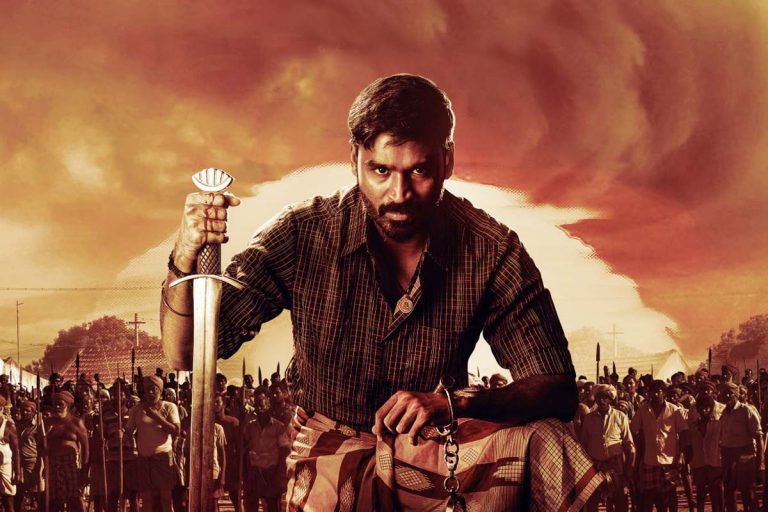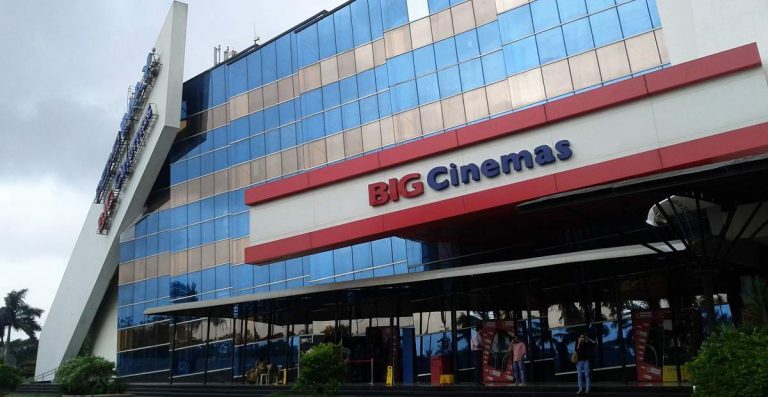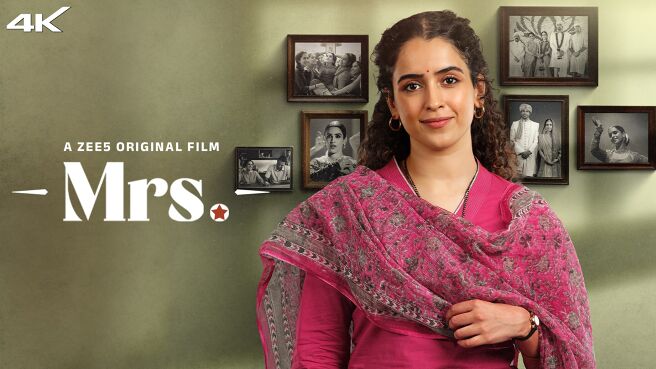Court: A movie that showcases the need for Fast track courts

A third year law student, currently enrolled in the BA.LLB(Hons) program at Jindal Global Law school.
The film ‘Court’ directed by Chaitanya Tamhane is a critically acclaimed movie that sheds light on the ever-involving intricacies of the Indian Judicial system; the breakdown of proper judicial procedure and lastly; the delays involved in bringing justice to the victim or the accused.
The movie revolves around the main protagonist, Narayan Kamble. Kamble appears to be an aged man, whose appearance is straightforward, simple, and uncomplicated. He performs and expresses himself through folklore and songs at public gatherings. In order to earn his daily income, Kamble tutors school children. The movie also revolves around the courtroom hearings that bring to light the various systemic delays associated while adjudicating a case. It also brings to light the helplessness of the accused (in this case, Narayan Kamble), who is framed without any substantial or significant evidence. In such a scenario, we not only get to see the life of the protagonist but also the life of the defense lawyer (Vinay Vohra). During the course of the trial, we get to see the cost Vinay Vohra has to pay for defending a citizen of a marginalized community.
On the other hand, we also get to see the life of the public prosecutor, who is willing to go to any length to put away the accused. Additionally, we also get to see the bias on the part of the investigating officer who arrests Narayan Kamble without conducting any further investigation (Kamble is arrested on the charges of abetment to suicide of Vasudev Pawar, a young manual scavenger who lived in the Sitla Devi slum area. According to the police, Narayan Kamble once performed in the vicinity, and his songs led to Vasudev’s suicide). Narayan Kamble was performing at the ‘Wadgaon Massacre Protest Cultural Meet’, where he sang the songs of resistance which he wrote. His songs depict the class struggles, the pain, and sufferings of the marginalized and the agony of the poor. They are about mass awakenings and questioning the oppressive governments. Kamble is arrested on the charges of abetment to suicide of Vasudev Pawar, a young manual scavenger who lived in the Sitla Devi slum area. According to the police, Narayan Kamble once performed in the vicinity, and his songs led to Vasudev’s suicide. As the trial paces up, the charges against Kamble emerge as weak, and he is granted conditional bail with an exorbitant bail bond. A few days later, Kamble is arrested again on fabricated charges under section 124A of the Indian Penal Code, 1860 (sedition) and the Unlawful Activities Prevention Act, 1967. The story of Kamble personifies the current states of the Indian criminal justice system and its approach towards the justice delivery system: systemic prejudices of the public prosecutors and the ill-treatment of the accused by the judicial system.
Through a viewing of the movie ‘Court’, this paper contends that while many argue that fast court lead to errors of judgement due to speedy examination of evidence that can lead to oversight, the film court in fact implies that they are necessary in India.
The issue of fast-track courts is something that continues to spark debates all over the country. Scholars from different parts of the world have highlighted the need to have special ‘fast-track’ courts to adjudicate sensitive topics like rape, sexual assault, terrorism, and other national issues. The reasoning behind such claims is based on the need to have swiftness of justice in the judicial system. Fast-track courts usually do not allot more than 10-15 cases for trial every week. The reasoning behind this is based on the fact that allotment of too many cases may require further continuances and the system will lose its credibility for being swift or fast (Kaufman 32).
A fast-track court will not only help in the disposition of cases at a higher rate but will also serve as a catalyst that can help clear the backlog of cases that can consequently enable the judges of the District Court and High Court to give their undivided attention to each and every case. Secondly, fast track courts will help expedite the procedures of a judicial trial that will subsequently lead to swiftness in justice. Thirdly, fast track courts will enable the various parties involved (plaintiff, accused, witnesses, prosecutor, defense lawyer), to present their arguments in a succinct and precise manner (Singh 698). In the movie ‘Court’, we get to see many instances wherein the delay in court proceedings is caused by the incompetence of the investigating officer; or by the lack of accessibility to courts for the marginalized communities ( the wife of the deceased is unable to go to the court as the cost of traveling back and forth from the court would have been too expensive for her); or by the systemic prejudices of the public prosecutor who instead of arguing on the merit of the case, makes comments like extremist and terrorist to stain the image of the accused in the eyes of the judge ; or by the plethora of cases a magistrate/judge has to adjudicate in hours. This delay in the adjudication of a case can ultimately lead to not only denial of justice but can also lead to detrimental effect on the accused’s health as we saw in the case of Narayan Kamble.
Before expounding on why fast track courts have now become a necessity in India, it is important to emphasize why the idea of fast-track courts has not yet gained enough traction in India.
One of the main issues associated with fast-track courts is the fact that due to speedy examination of evidence by the judges, the decision-making process might be adversely affected as the judges might commit inadvertent errors. Although fast-track courts are relatively faster in disposing of cases in comparison to the other courts, they have ultimately failed to consistently ensure the swift disposal of cases subsequently leading to pendency of cases.
Secondly, the conviction rate in fast-track courts is also quite low. This facet of the fast-track courts almost makes the idea of such courts unsustainable as justice cannot be guaranteed. The principal reason for low conviction rates in fast-track courts is the proportion of witnesses turning hostile and the failure on the part of the prosecution to make a substantial argument in order to prove the case beyond reasonable doubt.
Thirdly, the data gathered from existing fast-track courts indicate the failure of these courts to admit relevant evidence and their incompetence in not following the due procedure of law. Moreover, even relevant cross-examination procedures have not been observed in such courts, which accordingly negates the whole idea of a judicial trial- the right to a fair trial.
Lastly, fast-track courts have failed to ensure a separate and specialized procedure tailor-made for the fast-track courts. As a result of no specialized procedures, such courts tend to follow the same procedures as other courts, but with the name tag of ‘Fast-Track’ courts. Other issues like lack of specialized judges, lack of dedicated courtrooms and dearth of competent prosecutors and defense lawyers have only compounded the issue of why fast track courts have not yet gained enough traction in India (Singh 700).
In a criminal court, various external factors come into play that ultimately determine how long the trial is going to last. Some common factors include- tactics used by the investigating officer (use of stock witness in this case by the police); whether the defendant has the resources to hire his/own private lawyer or whether the defendant shall require assistance from the court; the community/caste/religion to which the defendant belongs also plays an integral role in determining the speed at which the trial is going to proceed (usually people from marginalized communities are questioned more rigorously); the degree of offense the defendant has allegedly committed plays an important role in determining the dates of trial as usually more heinous crimes are given priority over others types of cases (Neubauer and Ryan 215). Another factor that influences the length or duration of a trial is the tactics used by the prosecuting and defense lawyers (Neubauer and Ryan 217). A common view held by the judges is that the defense lawyers tend to intentionally question the sound decisions or judgements of the police and the magistrate in order to prolong the trial. Lastly, the mode of disposition in the trial court is also likely to influence the time required to process a case. Usually, trials take longer to reach a disposition than pleas. This is mainly caused due to difficulties in scheduling and the preparation time needed or requested by either of the attorneys (Neubauer And Ryan 216).
In the case of Narayan Kamble, we see some of the aforementioned external factors playing an extensive role in causing delay in the judicial proceedings of the court. In the movie, the issue of judicial trials takes center stage.
After Narayan Kamble was arrested for allegedly committing the crime of abetment of suicide, he is denied bail by the magistrate. Herein the magistrate refuses to even hear the merits propounded by the defense lawyer, instead he arbitrarily denies the bail. When the defense lawyer, Vinay Vohra, requests the magistrate to even put some ‘restrictions on the performances of his client’, the magistrate without any hesitation refuses to give any consideration. The magistrate’s main quote was “how can I give bail” (16:00). He doesn’t state the reasons for why he cannot grant bail but only passes the order. This ends up negating one of the main principles of a judicial trial- hearing the other side. This instance of denial of bail actually plays a really important role in the commencement of Narayan Kamble’s judicial trial. If only the magistrate had actually shown a bit more consideration and actually listened to the arguments of the defense lawyer, then maybe Narayan Kamble would have been granted bail. As a result, the delays incurred in the actual judicial trial of Narayan Kamble would never have occurred in the first place if the magistrate had been following the due procedure of law.
In the movie, we see that the investigating officer mentions the name of a witness ‘Nilesh Tawde’. But during the court proceedings, we find out that the name of Nilesh Tawde is not mentioned anywhere in the report presented to the defense lawyer, Vinay Vohra. In his defense, the investigating officer simply says that the witness in question withdrew his statement. When questioned by the judge about the whereabouts of the witness, the investigating officer simply replies, “I’ll get him next time” (51:31). This reply shows the carefree and lackadaisical attitude of the investigating officer. As a result of this mistake by the investigating offer, the trial is further prolonged, and the judge has to set a new date for the next hearing. The brunt of this mistake was borne by one person and one person only- Narayan Kamble.
The inaccessibility to courts is another reason for delays caused in the judicial proceedings of the court. In the movie, we get to know that the deceased’s wife’s whereabouts were unknown until the police found out that she had moved back to her home village. The reason behind shifting to her home village was that ‘she was scared’. Later on, when the defense lawyer, Vinay Vohra, personally offers to drop the deceased’s wife, she confesses the truth about how difficult it is for her to regularly go to the court hearings. When the defense lawyer told her that she might have to visit the court once or twice again, her immediate reply was “if I keep coming here, I’m going to lose whatever I have left” (1:21:47). By saying this line, she means to convey the fact that her unemployment status left her no choice but to go back to her home village. And now, because of a lack of sustainable source of income, it is difficult for her to attend court hearings regularly. The deceased’s wife is just another example that epitomizes the lack of accessibility to courts for marginalized communities. The existing financial difficulties make it almost impossible for a person like the deceased’s wife to go to the court regularly. Although the deceased’s wife eventually shows up to the court proceedings, the police were unable to locate her at first and this led to a new date being set for the hearing. The deceased wife’s and her family’s financial situation constrained her from attending the court proceedings; but the mere fact that she did not attend the court proceedings initially adversely affected the accused- Narayan Kamble. It is Narayan Kamble whose trial got further delayed as enough time had to be allotted to the police to trace the location of the accused’s wife. This case is just another example of how procedural fallacies in the Indian legal system led to unnecessary delays in the adjudication of the case. In my opinion, a specialized fast track court with specialized procedural laws dedicated to ensuring swiftness will go a long way in ensuring that people like Narayan Kamble do not have to suffer at the cost of others.
In conclusion, the need for fast tracks is more than ever right now. Through the movie, ‘Court’, one realizes that the time to act is not in the future but right now. The movie depicts the aforementioned examples of how justice delayed is justice denied. Courts have previously held that the right to speedy justice and the right to a speedy trial is a fundamental right under Article 21 of the Indian Constitution. Fast-track courts might not have gained enough traction yet in India but that should not stop the Indian Judiciary from trying and implementing a new system of fast-track courts that follow a specialized procedure, along with separate courtrooms and judges dedicated to the same. The movie ‘Court’ highlights the need for this more than ever. It instigates us to introspect the existing legal framework. It is plausible to say that if the idea of fast-track courts is not implemented soon, Narayan Kamble might not be the only defendant whose life is put on hold without any substantial evidence. Fast-track courts will help expedite such cases where there are inherent procedural flaws that can be traced all the way back to the investigating process. Maybe ‘Court’ is a great movie, not just in a cinematic sense, but also in a contemplative manner– it treats the audience as both witness and jury and lays down a question that has distinct interpretations but a common answer, i.e., Fast Track courts have become a necessity.
References
- Court, 2014, Directed by Chaitanya Tamhane, Zoo Entertainment Pvt Ltd
- Kaufman, Roger. (1982) “Fast-Track Courts with Part-time Judges”. Litigation, vol 9, no 1, pp. 31-59
- Neubauer, David and John Paul Ryan. (1982,) “Criminal Courts And The Delivery Of Speedy Justice: The Influence of Case And Defendant Characteristics”. The Justice System Journal, Vol 7, No 2, pp. 213-235,Singh, Ajay Pal. “Fast Track Courts in India: Past, Present and Future”. International Journal of Law Management and Humanities, vol 4, no 4, pp. 693-703
Featured Image Credits: Reddiff








